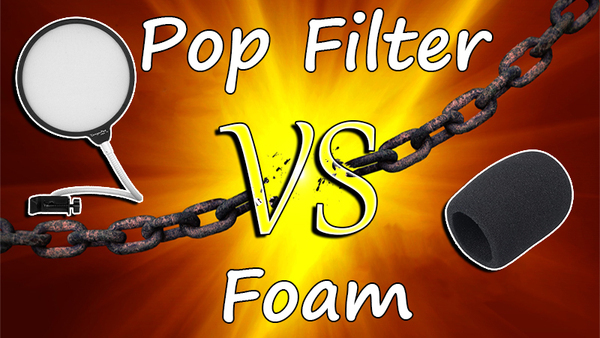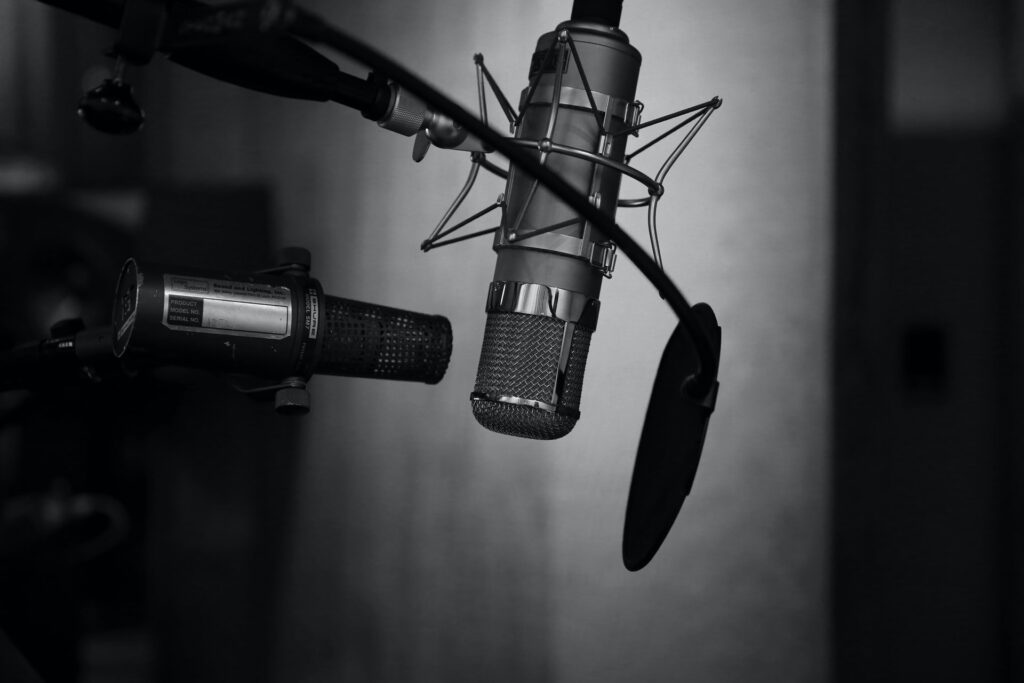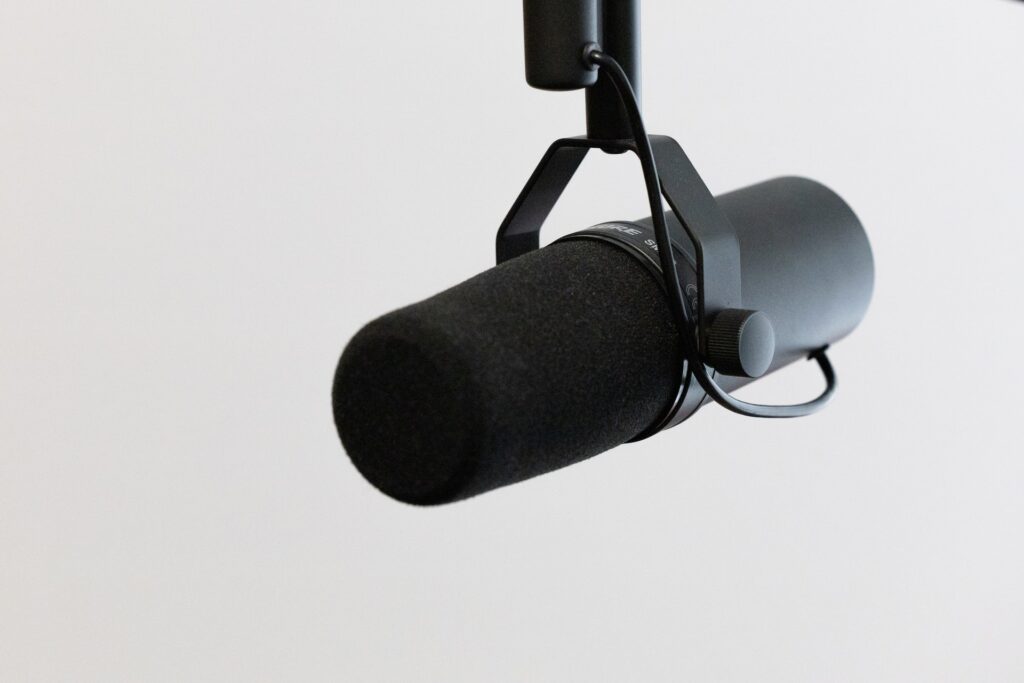When using a microphone, it is critical to understand all of the accessories available to you. Audio equipment is the most versatile and dependent on its accessories of all the equipment you can use for your creative endeavors.
One thing you need to understand up front is that there is a fundamental difference between microphone pop filters and foam covers (windscreens).
Both are used for different purposes, and today we will look at the differences and similarities between the two and give you a comparison between pop filter vs foam cover.
Table of Contents
Why Is Using A Filter For Your Mic Recommended
Why Use A Pop Filter
The wind, breath, and high- and low-level difficulties are all muddled in the background. Noise-canceling headphones also eliminate the popping sounds that occur when certain consonants are sung or spoken.
Filters keep saliva, dirt, dust, and other debris from entering the microphone, preventing it from malfunctioning.
Studio microphones often pick up on popping and plosive noises when consonants like P and B are spoken. The purpose of pop filters is to protect you from unwanted “pops.”
They have the ability to make everyone’s life easier from the beginning to the end. Pop filters, as opposed to windscreens, are far more effective at reducing background noises in close-mic situations such as podcasts, vocals, voice, and other similar situations.
When given the option to choose between a windshield and a pop filter, which should you go with? In the end, it all boils down to the specifics of the case.
Using a pop filter indoors is preferable to using a windshield when recording outdoors because a pop filter can’t protect your recordings from low-frequency wind noises.
Why Use A Foam Cover?
When the wind blows, it has a significant impact on microphones. Using a microphone that is exposed to the wind can cause your voice to be inaudible when you record a podcast. As a common issue, microphones come with a foam windshield.
A microphone-attachable foam windscreen, also known as foam (because, well, it’s foam!). The microphone capsule is protected from windblast thanks to its snug fit.

Taking your bare microphone outside and recording a short clip will give you an idea of what windblast sounds like. You could hear a pounding sound in the video.
When it comes to the production of foam microphone filters, open-cell foam is frequently used by manufacturers. As the sound waves reach the microphone capsule, the incoming wind flows into and around the foam structure.
This reduces noise while maintaining sound quality. Foam is a must, especially when recording outdoors, so don’t skip it.
Pop Filter
When it comes to recording studios, pop filters and pop screens are frequently used to improve the clarity of a speech that has already been recorded. Although these devices are smaller than those that completely obstruct the microphone, they are often placed in a similar location to the microphone and the speaker’s mouth.
If you sing or talk with a pop filter on, you won’t hear any popping noises or glottal stops in your voice. Spitting into the microphone can be disguised by covering breath bursts.
Pop filters come in a variety of shapes and sizes, but they all perform the same basic function. More high-frequency sounds can pass through the narrower mesh texture than foam coverings, making it ideal for podcasts, interviews, and recording singing voices.
What Are They Good For
When using voice-over mics, plosives and sibilance can be reduced with the use of pop filters. Without one, your recordings may sound sloppy and amateurish. It is impossible to create engaging podcasts, YouTube videos, or voiceovers without them.
Different Types of Pop Filters

1. Nylon Mesh Pop Filters
When making nylon pop filters, a plastic or metal hoop is stretched twice to form the filter’s outer layer. Plosives are stopped they get to the microphone by the two layers of the microphone.
2. Metallic Mesh Pop Filters
Woven metal mesh or perforated metal are used to make these circular filters, which may be used to filter water. They have bigger holes than filters made by the material last mentioned on this list and are the most effective at reducing noise levels.
Airflow is deflected downward using metallic mesh filters because of their well-crafted aperture designs that do not affect high frequencies as much.
Foam Covers
Many factors must be taken into account when choosing between a pop filter and a microphone foam windscreen.
So, to summarize: microphone foam covers protect microphones from being damaged by strong winds, which otherwise might result in excessive noise.
In situations where you need to capture ambient noise with minimal distortion, these microphones are a must-have.
Custom-sized windscreens are included with many microphones sold by various manufacturers. In addition, some windscreens can be used with a wide range of microphones, such as the universal ones.
Despite their low cost and portability, they do a great job of keeping the microphone dry. Windshield filters low-frequency interference, the same as pop filters, by absorbing it.
What Are They Good For
When recording or presenting outside in windy conditions, windscreens are a must-have accessory. A situation where there are no chances for redo is one in which this is especially critical.
Suppose you’re filming near a beach and want to include the sound of the waves, but you don’t want the wind to distort or drown out the actors’ voices during recording. In this case, your boom mic will need to have some sort of mic shield installed.
Different Types of Foam Cover

1. Windjammers
Windjammers are made of a synthetic material called fur. They are referred to as “windsocks” in some circles. In order to completely conceal microphones, windjammers are used. They are most commonly found on boom microphones, which are the types of microphones that are commonly seen during the filming of a movie or television show.
On the outside of windjammers, polyurethane foam is applied in order to further reduce the interference caused by the wind.
Their windscreens are built into the blimp-shaped microphones on which they are mounted, rather than being separate pieces.
2. Blimps
Blimps, which are large, foam windscreens that provide the most effective wind protection, are commonly used. A blimp-shaped structure, they are used to hold the microphone in place in a cylindrical space.
Blimps provide complete protection from all directions due to the fact that they completely enclose the entire microphone in a large open chamber design. It is possible to supplement this with synthetic fur covers, which will help to eliminate the majority of unwanted noise. Ideal for recording in the great outdoors.
The Advantages And Disadvantages Of Using These Filters
Pop Filter
As stated before Pop filters will reduce plosives and sibilance, which is necessary if you want to have professional-grade audio recordings of your content. Using a pop filter will make sure that you don’t have any issues with the high and low tones.
If you are doing a lot of voice recording a pop filter will streamline the editing process, since you won’t have to manually edit out all the small imperfections that come about from poping.
When you add how easy it is to implement a pop filter to all of this, you can see why having a pop filter as a microphone accessory is always a good idea.
While having a pop filter has a lot of advantages, it is not a perfect microphone accessory. Pop filters are unfortunately not as good at removing background and wind noise as a foam cover is.
If you are using a metal pop filter, there seems to be the sound of odd whistling in your recording which can be exacerbated if there is wind noise or other unwanted noises in the background.
And probably the most obvious problem with a pop filter is that the nylon mesh of the pop filter will always be in the way.
Foam Cover
A foam cover is great peace of equipment no matter if you use it on a condenser mic or any other kind of mic. It doesn’t matter what foam material it uses, as long as it is reducing background noise like wind noise, it is doing its job.
Whether you are in an indoor setting like a recording studio or outside you are outside, if you are looking to capture the important bits of sound while eliminating unwanted sounds, a mic windscreen like a foam cover will do the job.
Just like a pop filter, it is very easy to use, so you should always have one on hand if you want to have great audio quality.
The only problem that this type of filter has is that the foam cover tends to dry out with time. This can cause flaking which can affect the audio quality of the recorded material.

The other issue is a smaller one, and it is that, while this filter is good for wind protection, it will not be able to block other sounds such as plosives.
The foam cover sometimes tends to pick up on some high-frequency sounds as well, and that can lead to a dull sound in your recording.
Is Using A Filter Necessary?
The situation dictates a lot of the response. Mic windscreens, on the other hand, should only be used outside, not indoors. Foam or synthetic hair can be used to make them (dubbed “dead cat”).
Windscreens for microphones can reduce frequency response, so they should only be used when absolutely necessary and not as a substitute for a high-quality pop filter when recording in an enclosed environment.
Conclusion: Pop Filter vs Foam Covers
As you can see, the answer to the question of pop filter vs foam cover is not so simple. Microphone windscreens allow you to record outside, which is useful when trying to capture a wide range of sound.
A pop filter, on the other hand, will allow you to record sound inside. Microphone windscreens would not be able to eliminate all of the plosive and popping sounds that are unavoidable when recording human speech.
You should choose the one which is best suited for your needs.
